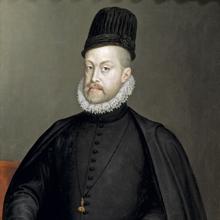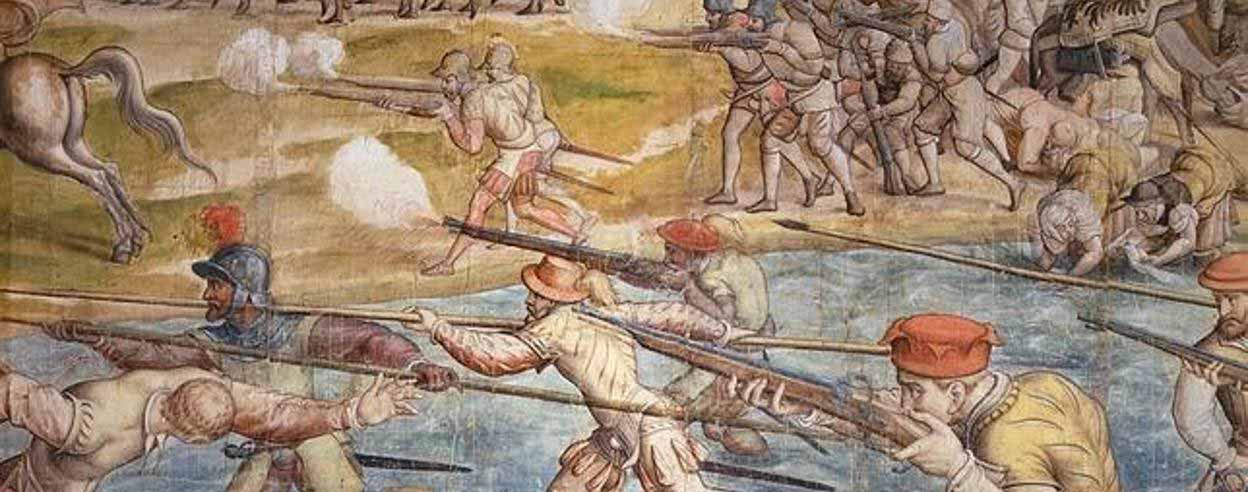Source:ABC
Neither the Spanish Armada nor Rocroi: this was the true great catastrophe of the Spanish Empire.
Victories are sons of many parents and defeats usually orphans, except in Spain. Victims of a kind of historical masochism, the Spanish have accepted as valid defeats which, such as La Noche Triste, the Spanish Armada, or the Battle of Rocroi in 1643, have been distorted by foreign historiography at will.
Under the excuse that they were involved in epic or that they were caused by inclement weather, it has been complacently assumed that the defeat on La Noche Triste was a disastrous flight for Hernán Cortés, that the Spanish Armada marked the end of the sea hegemony of the Spanish Empire (which means disregarding the major failure of the Counter-Navy that England crashed against the Spanish coasts a year later), or that in the battle of Rocroi against the French ended the supremacy of the Spanish Tercios (which did not really happen until 1658 with the defeat at The Dunes). However, the Spanish have neglected one of the greatest and authentic disasters in the history of the Spanish Empire: the one that occurred in 1560 in Los Gelves (Tunisia).
The Mediterranean was to give little joy to Spain in the 16th century until the Rescue of Malta and the Battle of Lepanto. The victorious encounter in the Gulf of Lepanto was an unexpected exception after decades of hardship. But, among all the disasters, some as painful as the Algiers Day in 1541, none was as tragic as the landing at Los Gelves in 1560. Los Gelves, also known as Djerba, is the largest island in North Africa and a key scenario in the clashes between the West and the East. Djerba saw the Normans of Sicily, the Aragonese, the Spanish, and the Ottomans succeed each other, fighting for four centuries over 514 square kilometers of land.
In the early Modern Age, the Ottoman Empire helped the Berber corsairs establish a permanent base on the island to launch their attacks from there. However, Spain was not willing to give up a territory with such strategic value without a fight. Fernando II of Aragon (the Catholic King) was the first in the 16th century to regain the Spanish interest in the island. After conquering Oran, Bejaia, Tripoli, and Algiers, the Hispanic Monarchy moved its attention to Djerba in 1510.
The Aragonese army of Pedro Navarro, leader of the campaign, was joined by 7,000 Castilians under the command of García Álvarez de Toledo – father of the famous III Duke of Alba – to begin the landing. The heat, the lack of water, and the inexperience of García Álvarez de Toledo led to the serious setback of 1510. More than 4,000 men died during an improvised march through the desert, among them Álvarez de Toledo. The death of his first-born son shook the House of Alba, marked the childhood of Fernando Álvarez de Toledo, and provoked his staunch hatred of the Ottoman Empire.
A disaster caused by slowness
The war efforts allowed Los Gelves to be finally under Spanish sovereignty in different periods, from 1520 to 1540 and from 1551 to 1560. However, the dominion of the island was always more nominative than real. The Ottoman Empire controlled the Mediterranean with an insulting superiority and, in 1558, Pialí demonstrated it by devastating Menorca at will. Faced with the Muslim threat, Philip II appealed to Pope Paul IV and his Catholic allies to prepare a combined expedition in 1560 against Tripoli, a city seized a decade before by the corsair Dragut from the Order of Saint John (already transferred to the Island of Malta).
The coalition consisted of Genoa, Spain (with forces from Naples and Sicily), Florence, the Papal States, and the Knights Hospitallers. Although the number of forces gathered in the vicinity of Tripoli has been the subject of much exaggeration –possibly 15,000 men, 9,000 of them Spanish -, there is a certain consensus on the number of ships assembled: around 50 galleys and some 40 minor vessels.
The first problem arose when the preparations were continuously delayed until the surprise factor was destroyed. When the operation finally took place, the Ottomans prepared a huge fleet to counterattack. Sancho de Leyva, in charge of the Sicilian galleys part of the Spanish force, wrote to Felipe II complaining about the delay: “I have not been slow to tell the Duke of Medinaceli many times that the greatest good for this enterprise consisted in time brevity, and that delay was the greatest difficulty … that it seems that there has been no part of Italy from which people and other supplies have been brought”.
 Giovanni Andrea Doria – assisted by his uncle, the famous Andrea Doria, who died at the age of 94 shortly after the preparations – was in charge of captaining the fleet assembled in Messina. After stopping in Malta due to bad weather – where they lost 2,000 men to illness – the fleet arrived on the coast of Tripoli at the end of February 1560. There, Doria’s shyness, always afraid to take risks (the night prior to Lepanto, he was the only one who recommended avoiding the confrontation), caused a disorderly retreat where everyone saved his own skin.
Giovanni Andrea Doria – assisted by his uncle, the famous Andrea Doria, who died at the age of 94 shortly after the preparations – was in charge of captaining the fleet assembled in Messina. After stopping in Malta due to bad weather – where they lost 2,000 men to illness – the fleet arrived on the coast of Tripoli at the end of February 1560. There, Doria’s shyness, always afraid to take risks (the night prior to Lepanto, he was the only one who recommended avoiding the confrontation), caused a disorderly retreat where everyone saved his own skin.
The bulk of the fleet had to take refuge in Los Gelves, where they landed unopposed. Juan de la Cerda, Duke of Medinaceli and general of the Spanish forces, ordered to build a fort in the north of the island. This fortification was to be completed within several months, but Piali Pacha, commanding 86 galleys, was not willing to ever see it finished. The Turks showed up on May 11 and in a matter of hours sank more than half of the Christian fleet. Against the wind, few galleys were able to escape the surprise attack, but among the privileged were the vessels of Giovanni Andrea Doria and the Duke of Medinaceli, who left behind 2,000 men entrenched between the fort pillars.
After three months under siege, the garrison of Los Gelves surrendered on July 31, 1560 to an army of almost 40,000 Muslims. During the extreme resistance experienced by those 2,000 men, Field Master Álvaro de Sande rose as a doughty leader who led one last desperate escape days before the surrender. Once the water wells were taken by the Turks, nothing was left to do but to surrender.
The thousand soldiers that still survived in July were annihilated or, in the best of cases, taken captive to Istanbul. The corpses were used to lift a macabre pyramid of bones and skulls covered with dirt from the beach. This Dantesque monument to death was visible until 1848, when the British consul ordered the remains to be transferred to a Catholic cemetery.
Felipe II loses 10.000 of his best men
In total, the Christian casualties exceeded 30 sunken galleys, more than 10,000 dead in the course of the entire operation and 5,000 prisoners. Between them, Piali took the most outstanding captains to Istanbul: Berenguer de Requesens, Sancho de Leyva, Lope de Figueroa, Sancho Dávila, Rodrigo de Zapata and Álvaro de Sande. Not surprisingly, most were rescued in a short time, except Álvaro de Sande who was released by the Sultan only after the mediation of King Charles IX of France, an ally of the Turkish Empire, and the payment of 60,000 gold escudos.
The Extremaduran Álvaro de Sande recalled the rest of his life the torment and horror experienced in Los Gelves: “Captain Don Jerónimo de Sande, my nephew, other friends and many very dear people were killed in front of my eyes.” And he was not the only one who was terrified by the Turkish display. The enormous disaster of Los Gelves caused panic throughout the ports of Christendom and even Spain authorized the evacuation of Oran, its most advanced place in Africa, considering it indefensible. Still, the Ottoman war in Persia prevented the Sultan from launching the bulk of his resources to deal the final blow to the Hispanic possessions.
Because the darkest hour is before dawn, the disaster served to make Philip II realize the magnitude of the problem in the Mediterranean. The Empire began an intensive reform of its galley fleet that resulted in the Ottoman defeat at Malta in 1565 and, years later, the celebrated victory at Lepanto.
Share this article
On This Day
No Events
History of Spain
26 August 2020
27 January 2021
Communism: Now and Then
23 December 2022
28 July 2021







